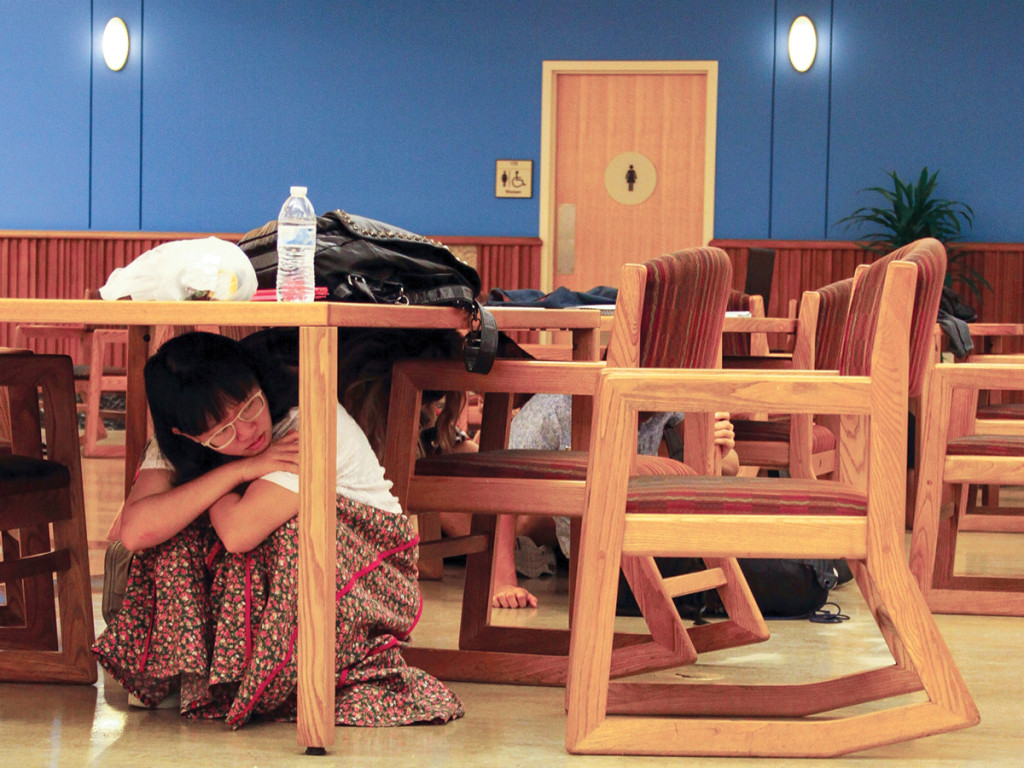
On Thursday, Oct.15, UCR held an emergency earthquake drill at 10:15 a.m. as part the “Great California Shake Out,” a regional drill which seeks to encourage preparedness for a large magnitude 7.8 earthquake. UCR students joined 10 million other people across the state who participated in this drill.
Since 2006, seismology experts have predicted that “the big one,” an over-7.0 magnitude earthquake will occur along the San Andreas fault in the near future. An earthquake this large has the possibility to cause severe damage across the Riverside, Imperial and San Bernardino counties, while counties close to it such as LA and San Diego will face lighter repercussions.
According to Abhijit Ghosh, an earth science professor and the main organizer of the earthquake drill, it is nearly impossible to predict when the earthquake will occur. “We know the basic physics of earthquake. But details of the physics of fault motion is still unclear, and an active area of research. This is because there are many factors that control earthquakes, like fault friction, evolution of stress on the fault, fluid pressure etc. With current technology, it is hard to measure majority of these factors directly.” Ghosh explains.
UCR lies 13 miles away from the San Andreas fault and five miles away from the San Jacinto fault, which Ghosh states can also cause severe damage.
When asked how well campus buildings can fare if an earthquake of that magnitude were to occur, Ghosh answered “It is a tricky question to answer because ground shaking due to an earthquake depends on multiple factors like, distance to the earthquake focus, distance from the fault, rupture direction, geology under the building etc.”
Ghosh also provided further tips on what to do if an earthquake were to occur during lecture and other moments, “During shaking due to an earthquake, don’t run or try to walk out of a room. Drop, cover and hold on wherever you are. If there is no table or desk near you, drop to the ground and then if possible move to an inside corner of the room. Be in a crawling position to protect your vital organs and be ready to move if necessary, and cover your head and neck with your hands and arms.”
Information booths were posted outside Coffee Bean on Wednesday and Thursday Oct.14-15 from 9 a.m. to 4 p.m. to raise awareness of major earthquakes and to help prepare students. Infographics of major international earthquakes, such as the 2010 Haiti Earthquake and the 2008 Sichuan earthquake in China were a part of the display.
George Payne, a third-year political science major who was in class during the drill, explained that many students and the professor took the drill lightly. “Well, our professor told us about the drill, which we kinda joked about it, and when the time came, most of us stayed in our seats. The professor went under the desk, which we all laughed at, and I went under mine just for fun,” Payne explained.
Payne, however, also believed that basic common sense caused that reaction from the classroom, ”In my opinion, the reason why most of us stayed in our seats was because we all know how the drill goes, and at this point, it’s kind of a joke. I would hope everyone knows how to stop and take cover during an earthquake.”








